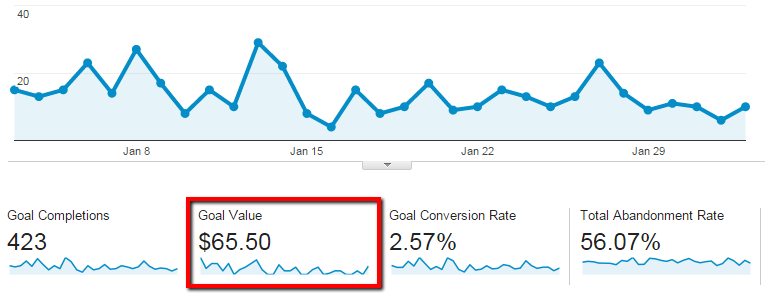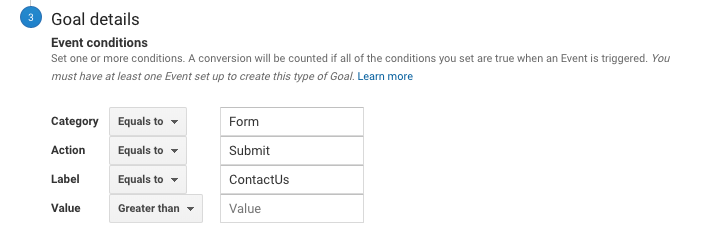Discover the Limitations of Google Analytics Goals: Revealing the Information Types That Remain Untrackable
As services increasingly rely on data-driven decision-making, understanding the restrictions of tools like Google Analytics ends up being critical. While Google Analytics Goals offer beneficial understandings right into individual communications, there exist data types that avoid monitoring, posturing challenges to a detailed understanding of customer habits. These untrackable information types question concerning the accuracy and completeness of the analytics data that companies greatly count upon for their digital strategies. Curious to uncover the covert blind spots in your data analysis process?
Insufficient User Journey Tracking
Insufficient customer trip monitoring within Google Analytics can prevent the ability to accurately evaluate user habits. When the user trip is not completely tracked, there are spaces in the information that stop a comprehensive understanding of how users interact with an internet site. This absence of understanding can result in missed out on opportunities for optimization and improvements to the user experience.
One usual concern with insufficient individual journey monitoring is the inability to see the complete path that customers take before finishing an objective or leaving the site. Without this details, it is challenging to identify where users may be coming across barriers or rubbing factors that stop them from converting. In addition, insufficient tracking can obscure the impact of certain marketing initiatives or site modifications on user behavior.
To resolve this limitation, it is essential to establish appropriate tracking mechanisms within Google Analytics to capture the entire customer trip. This might entail establishing event monitoring, objective funnels, or using tools like Google Tag Supervisor to make certain that no important communications go unrecorded. By obtaining a comprehensive view of the user journey, site owners can make even more enlightened choices to boost user engagement and drive conversions.
Acknowledgment Difficulties
Browsing through acknowledgment difficulties in Google Analytics requires a detailed understanding of how different touchpoints add to the general conversion process. Acknowledgment difficulties occur from the complexity of modern-day consumer journeys, where individuals connect with multiple networks prior to converting. Google Analytics gives numerous attribution models like very first touch, last touch, and straight, each supplying a different point of view on exactly how credit score is designated to touchpoints along the conversion course. Nonetheless, these versions may not always accurately show truth influence of each touchpoint on the conversion.
One usual acknowledgment challenge is the trouble in connecting conversions to the appropriate resource, specifically in instances where individuals communicate with numerous channels prior to transforming. This can result in inaccuracies in figuring out which marketing efforts are driving the most conversions. Additionally, cross-device tracking postures one more acknowledgment obstacle, as individuals commonly change in between devices throughout their trip, making it testing to track their communications seamlessly. Marketing professionals have to thoroughly evaluate and translate attribution data to make educated decisions and maximize their marketing techniques properly.
Offline Conversions
Provided the difficulties linked with connecting conversions precisely in online networks, the dimension of offline conversions presents a considerable chance for online marketers seeking an extra extensive understanding of their customers' trip. Offline conversions refer to actions that customers take in the physical globe, such as making purchases in brick-and-mortar shops or over the phone, participating in events, or involving with published products - what data is google analytics goals unable to track. These conversions are essential for companies that operate both online and offline, as they supply Source important understandings into the efficiency of advertising projects across numerous touchpoints
Tracking offline conversions commonly postured a substantial difficulty for online marketers, as it was testing to connect these activities back to certain on the internet communications properly. With innovations in technology, such as the integration of CRM systems, special identifiers, and discount coupon codes, services can currently bridge the void between online and offline data to acquire a much more alternative sight of consumer actions. By successfully determining offline conversions, marketing experts can optimize their methods, designate sources more successfully, and eventually boost the general customer experience.
Cross-Device Tracking
Cross-device monitoring plays a vital role in understanding the interconnected nature of customers' digital communications across several gadgets. In today's omnichannel world, where customers seamlessly change in between smartphones, desktops, and tablets, tracking their habits across these gadgets is important for marketers to obtain a thorough sight of their client journey.

Additionally, personal privacy worries and guidelines such as GDPR and CCPA have additionally complicated cross-device tracking. With customers requiring even more control over their data and boosted constraints on monitoring technologies, marketers have to discover privacy-compliant and innovative ways to connect user interactions throughout gadgets.
Dynamic Content Involvement
Understanding customer engagement with vibrant web content is critical in enhancing electronic marketing have a peek at this website methods for enhanced target market interaction. Dynamic material describes site elements that transform based on user actions, choices, or other aspects, supplying a tailored experience. Nevertheless, tracking user communications with dynamic material postures challenges for typical analytics devices like Google Analytics.
While Google Analytics can track fundamental communications like clicks and page sights, it might struggle to record more nuanced engagements within vibrant material. what data is google analytics goals unable to track. Metrics such as time invested in particular dynamic elements, hover activities, or interactions within pop-ups are often not easily original site quantifiable making use of standard monitoring techniques. This limitation hinders online marketers' capability to totally understand exactly how customers are engaging with dynamic material and customize their approaches appropriately

Verdict
In final thought, Google Analytics goals have limitations in tracking incomplete customer trips, attributing conversions accurately, catching offline conversions, tracking cross-device communications, and determining dynamic material involvement. These restrictions highlight the importance of checking out additional tracking approaches and tools to acquire a much more comprehensive understanding of customer behavior and conversions beyond what Google Analytics can supply.
While Google Analytics Goals offer beneficial understandings into user communications, there exist information kinds that elude tracking, posturing obstacles to a detailed understanding of user habits.Insufficient individual journey monitoring within Google Analytics can prevent the ability to precisely analyze individual habits. When the individual trip is not fully tracked, there are voids in the information that avoid a comprehensive understanding of how users interact with a website.One usual issue with insufficient user trip tracking is the inability to see the complete course that individuals take previously completing an objective or leaving the site. By obtaining an extensive sight of the customer journey, internet site owners can make more educated choices to enhance customer engagement and drive conversions.